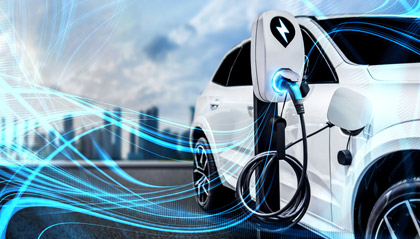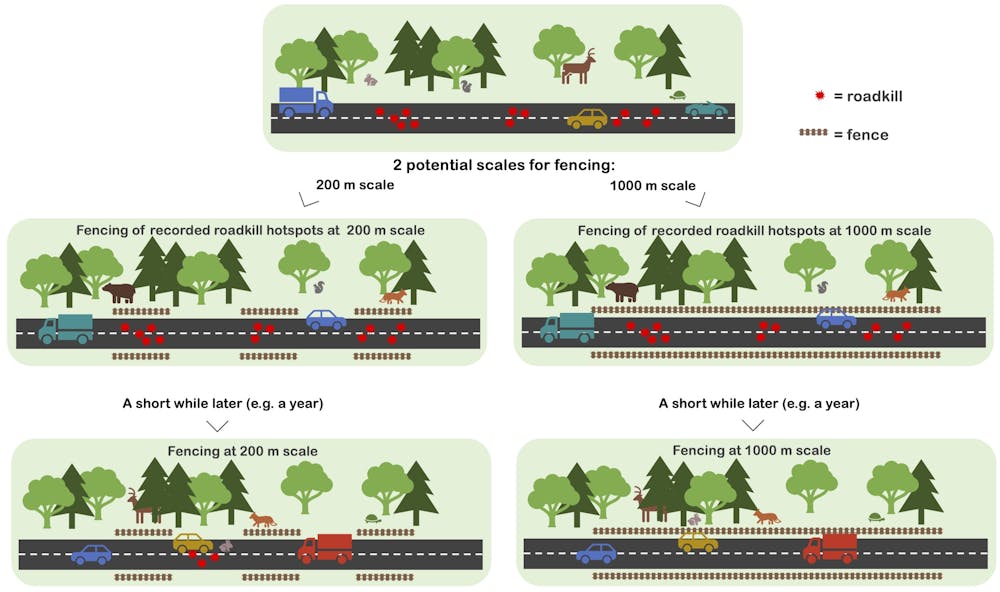Welcome to tomorrow’s world where electric vehicles reign – they’re sleek, hushed, and perfect for the morning commute, but have you ever imagined their impact on the fauna sharing our roadways with us? As we quietly roam the asphalt jungles, will our feathered and furry friends be caught off guard? This article takes a deep dive into the complex relationship between electrics and ecosystems, investigating whether EVs could reduce roadkill and understanding other impacts they might have on wildlife. Let’s crank this discussion into high gear, shall we?
Impact of Traditional Vehicles on Wildlife

From deer bounding across the freeway to squirrels scrambling up suburban streets, the interaction of wildlife with automobiles is an often overlooked issue. Traditional vehicles, those with internal combustion engines, pose a significant threat to various wildlife, both directly and indirectly.
Directly, gas and diesel fueled cars can inflict lethal damage through collisions. Each year in the U.S. alone, an estimated one to two million large animals are killed by motor vehicles. Beyond the immediate carnage, vehicular impacts often result in a loss of biodiversity, as populations of certain species may plummet locally due to high rates of roadkill. Nocturnal creatures, birds, reptiles, and slow-moving animals like turtles are particularly vulnerable.
Traditional vehicles also contribute to the degradation of animal habitats. A busy road can cleave through forests and wilderness, creating a significant barrier for animal movement. This fragmentation of habitats is serious business—it isolates animal populations, limiting their access to essential resources and mates, and ultimately reducing genetic diversity.
Besides, noise pollution is another insidious form of impact. The symphony of engine roars, honks, and roaring tires is not just annoying for us humans; it can also disrupt animal behavior significantly. Some species may be forced to abandon their established habitats due to the unbearable noise, while others may experience reduced reproductive success.
And lastly, heat and toxic emissions from traditional vehicles contribute to climate change, impacting wildlife on a global scale. Rising temperatures can disrupt hibernation patterns, induce stress in heat-sensitive species, and influence the availability of food resources. Furthermore, species like polar bears and penguins that rely heavily on icy habitats are now facing an existential crisis due to melting polar ice caps.
In essence, the ecological footprint of traditional vehicles extends far beyond their tire tracks. While they have proven convenient for human movement and growth, their detrimental effects on wildlife are considerable and warrant attention. The need for more eco-friendly transportation is evident, and this is where electric vehicles enter the scene.
Introduction to Electric Vehicles

Welcome to the quiet revolution of transportation. Let’s meet electric vehicles – commonly known as EVs, the headliners of this automotive revolution. They’re sleek, they’re efficient, and they’re part of a seismic shift in how we approach our daily commutes and long-distance travels alike.
For the uninitiated, EVs run on electric motors powered by batteries, as opposed to the gasoline or diesel engines that traditional cars use. These machines are not science fiction, they’re here now, grinding gears on our roads, highways, and maybe even in your own driveway. Their popularity is shooting upwards like a Tesla Roadster launched into space. And why not? They produce zero tailpipe emissions, thereby offering a greener, cleaner mode of transport.
Charging an EV is a lot like charging your smartphone. Instead of pulling up to a gas station, electric vehicle drivers simply plug into an electric charging station at home or on the go. The glory being, you wake up each morning to a fully charged vehicle. Charging times can vary from 30 minutes at supercharging stations to overnight with a common household outlet, depending on the vehicle and charger.
A key element that contrasts EVs from their gas-guzzling peers is their relative silence. Less vroom, more zoom. Traditional vehicles can’t help but broadcast their presence with the roar and rumble of their engines, whereas EVs are more the strong, silent type. They operate so quietly that, at low speeds, pedestrians often won’t hear them coming. This sonic stealth is a boon in the context of reducing road noise pollution but raises concerns about pedestrian safety, leading to mandatory artificial noises added to some models at low speeds.
Then there’s the thrills factor. Don’t let their silent operation fool you; EVs offer a level of performance that can give conventional cars a run for their gas money. With the electric motor’s instant torque—aka instant acceleration—EVs can outrun many gas-powered sports cars off the line. The Tesla Model S Plaid, for instance, boasts a 0-60 mph time of under 2 seconds. That’s Formula 1 territory!
In spite of these benefits, there are challenges too. The limited range on a single charge, the time it takes to recharge the battery, and scarcity of charging stations in certain areas are commonly cited issues. However, continuous breakthroughs in technology have consistently improved battery capacity and charging times, while infrastructure development is catching up.
So there’s your nutshell version on electric vehicles. As we move forward, we’re going to delve deep into how these whispery wheelers can positively impact wildlife. Buckle up and enjoy the ride. It promises to be informative, exciting and packed with electrifying insights. No gas station stops required!
Benefits of EVs for Wildlife

Electric vehicles (EVs) bring a boatload of good news for our planet’s often overlooked inhabitants – the wildlife. For starters, EVs boast of a near-silent operational noise level. This quality goes a long way in decreasing noise pollution, a notorious bane in the natural habitats of wildlife near urban areas or highways. Traditional, Internal Combustion Engine (ICE) vehicles contribute significantly to the chaos of noise pollution, while their electric counterparts tread lightly in our ecospace. The reduction in noise pollution could mean less disruption of animal communication, hunting, and mating behaviors, leading to a healthier balance in ecosystems.
In addition to curbing noise pollution, EVs emit zero tailpipe emissions. Traditional vehicles spew out a myriad of harmful gases- including carbon monoxide, sulfur dioxide, and nitrogen oxides- which not only harm wildlife but can also contaminate their habitats. Dependence on EVs means reducing our carbon footprint and giving wildlife a chance to thrive in cleaner, less polluted environments.
Furthermore, the nature of how EVs operate could potentially decrease roadkill. When a quiet electric vehicle approach, smaller creatures like squirrels and rabbits have a better chance of noticing the vehicle’s motion and getting out of the way before it’s too late, unlike the often-deafening roar of conventional vehicles that can leave animals confused and paralyzed.
With climate change posing an increasing threat to biodiversity, the ability of EVs to mitigate greenhouse gas emissions is critical. Protecting habitats from the devastating impacts of global warming means preserving the delicate eco balance, reducing habitat loss, and ensuring the survival of various species.
Notably, EVs may diminish the need for digging up wildlife habitats for oil extraction, a notable contributor to habitat destruction and species endangerment. Electric vehicles powered by renewable energy arguably results in a lower overall environmental impact, safeguarding valuable habitats and the myriad species that call them home.
However, for all these benefits to be fully realized, widescale adoption of EVs is necessary. As paradigms shift towards greener and more sustainable alternatives, more and more road-goers will hopefully transition to these quiet, zero-emission vehicles, leading us to a future where both humans and wildlife profit.
Strategies to Minimize Roadkill

As we delve into the strategies for roadkill reduction, it’s worth noting that many conventional tactics remain invaluable. These include animal crossing structures like bridges or underpasses, fencing to deter wildlife from roads, and road signs that advise drivers of animal crossing hotspots. The digital age, however, brings a new world of possibilities for mitigating these unfortunate encounters.
Firstly, our greatest tool in this endeavor could be the rising popularity of electric vehicles (EVs). The virtual silence granted by their electric motors could allow animals to hear approaching traffic better, giving them time to retreat. It’s like having every vehicle on the road wearing noise-canceling headphones, rather than roaring with booming bass from disturbed exhaust systems.
Speaking of technology, there’s also the potential to tap into GPS and satellite tracking to relay real-time data about wildlife movement to drivers. Imagine your vehicle being updated about a herd of deer just around the next bend—you’d not only slow down, but you might even pause to take in the view. And let’s not forget the marvels of autonomous technology, with an increasing number of vehicles capable of detecting and avoiding wildlife on the road through lidar and other sensing technologies.
Additionally, changing our own driving habits could play a significant role. Often, it is not actually the speed of the vehicle that gives animals little chance of survival, but sudden changes in speed or direction. Consistent, predictable driving gives animals the best chance of judging your path and steering clear. And nothing ruins a perfectly good joyride more than needing to clean furry remains out of your vehicle’s grille.
Furthermore, there could be merit in improving driver education to create awareness about peak wildlife movement times (often dawn and dusk), which also happen to coincide with challenging light conditions for drivers. EV-specific driving lessons could even incorporate elements around wildlife safety, extending their positive contribution to roadkill prevention.
If all else fails, vehicles could be retrofitted with wildlife deterrent systems. While initial attempts at deterrence, such as ‘deer whistles,’ have proven to be largely ineffective, there remains scope for science to improve these existing systems or devise new ones. Perhaps, in the not too distant future, we might see EVs employing systems similar to those used in aviation to deter bird strikes—a high-tech, humane deterrent system integrated right into your vehicle’s design.
Utilizing a combination of these strategies, we can grant wildlife a much-needed reprieve from automotive threats while ensuring that drivers enjoy safer, nature-friendly journeys. The advent of EVs only amplifies these opportunities for humane progress.
Case Studies: EVs and Wildlife Conservation

Case in point: Idaho’s Department of Fish and Game partnered with a local electric vehicle (EV) company to better understand the impacts of EVs on wildlife conservation. By tagging and tracing a fleet of electric cars across the state’s most populated wildlife pathways and analyzing the data obtained, researchers concluded that electric vehicles, being quieter, were less likely to startle or draw wildlife towards the roads.
At the high-tech end of the scale, Norway’s Conservation and Wildlife Service has been using electric drones to monitor wildlife in remote areas. These drones, powered by eco-friendly electric motors, have virtually none of the environmental interference caused by their gasoline-fueled counterparts. As a result, wildlife tracking and cataloguing have been revolutionized, allowing for minimally intrusive wildlife program implementations.
Another noteworthy example is from South Africa’s Kruger National Park, where safari vehicles have been transitioning to electric power. Silence is not just golden; it’s preventive. With hardly any noise to startle the animals, the tourists can have a close-up encounter with the wildlife, thus not interfering in their natural behavior. Additionally, the zero-emission electric jeeps contribute to a significant reduction in air pollution, fostering a better environment for both, the wildlife and tourists.
In Australia, Tasmania’s scenic reserves aren’t left behind. Here, electric bikes are used for patrolling duties. This provides dual benefits: negating the need for fossil fuels and causing lessened disturbance to the local fauna due to diminished noise levels.
In each of these case studies, a common trend emerges: not only do EVs help reduce emissions, they have less impact on wildlife due to their quieter, less intrusive operation. The tangible benefits are prompting more organizations to choose electric alternatives, making conservation efforts successful.
But remember that EVs are just one part of a larger solution to our wildlife interaction issues. Their adoption must be complemented with other initiatives, including wildlife crossing structures and community awareness campaigns. The switch to electric is valuable not just for the direct benefits it brings, but for the broader shift in mindset it represents: a shift toward respect for nature and commitment to minimizing our impact upon it.
FAQs
How Can EVs Help Reduce Roadkill?
you could help stop turning wildlife into road pizzas while driving to your fancy vegan pizza place?
Do EVs have any other positive effects on wildlife?
Are there any downsides to EVs regarding wildlife?
Conclusion
Electric vehicles, with their near-silent operations, can drastically contribute to reducing roadkill while minimizing disturbance in various habitats. However, adequate and thoughtful infrastructure such as wildlife crossing structures are crucial to ensure this positive impact. Integrating environmental awareness with technological innovation, the EV revolution proves promising not just for our transport needs, but for our cohabitant wildlife as well. As acceleration propels us forward, let’s make sure our pace benefits all creatures sharing this ride on planet Earth.
